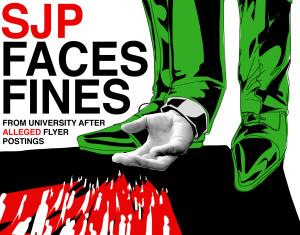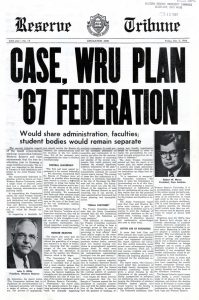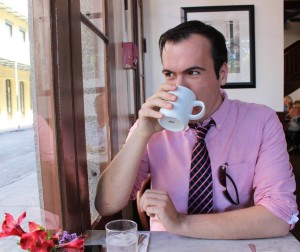Editor’s note: Each day sickly patients and concerned families arrive at University Hospitals Case Medical Center, searching for hope in the medical expertise that fills the institution’s corridors. Less than a block away behind stone walls lays a different building – one that holds the road map of where medicine has been and where it is going.
In this multipart series, The Observer explores the Dittrick Medical History Center – from the artifacts within it to the faces behind it – in an effort to shed light on one of the university’s most underappreciated resources.
The elevators across the campus of Case Western Reserve University come in many shapes and sizes. Some are large, feature four buttons, and serve only to remind you that taking the stairs would have been 10 times faster. Others are small, host an array of buttons, and make you hope your lunch is fully digested before climbing inside.
Then, there are the unique elevators. Adorned with multiple doors and more buttons than a typewriter, these are the elevators that silently promise to take you somewhere special. This is the type of elevator by which the Dittrick Medical History Center can be reached.
Timidly tucked away on the third floor of the Allen Memorial Medical Library, which occupies the corner of Euclid Ave. and Adelbert Rd., the Dittrick reflects two histories. Its exhibits portray the history of medicine and a promise to make it relevant for every person – from student to teacher and patient to doctor – who emerges from the Allen’s antique elevator. Beneath its façade, however, lie subtle impressions of more local creation: the history of the university and the city in which it lives.
When visitors first set foot on the museum’s floor, they are greeted by Juno, a transparent female figure who draws attention with her complex network of veins, arteries, and bones. Around Juno’s personal corner stand shadowboxes revealing medical instrumentation from eras long since expired. But across the hall from these displays sits something equally intriguing: a glass pane door that peers into a dimly lit study.
A museum in its own right, the pleasantly aged office behind this entryway appears less like a workspace and more like an exhibit. Rows of books line the shelves and portraits decorate the walls, all coated in a film of dust that serves as tribute to their antiquity. An old-fashioned, yet sturdy, set of table and chairs beckons visitors into the room, while a kind-faced man with circular glasses can be found typing away at a gleaming MacBook Pro situated on a heavy, wooden desk.
The man behind the artifacts, James Edmonson, Ph.D., is the chief curator of the Dittrick Medical History Center, a role he has held since 1998. While his office may seem outdated, its antique aesthetic remains a testament to the historic role that he continues to fulfill in an increasingly modern age.
“The origins of the museum go back to 1899,” Edmonson explains in a subtle, prideful tone. “People were collecting [medical artifacts] at the end of the nineteenth century and early twentieth century, and we have as many as 20,000 to 30,000 items if you want to count them out carefully.”
Walking with purpose to the entrance, Edmonson makes note of the antique elevator that delivers visitors to the museum’s opening. “When people come to the Dittrick, it takes some resourcefulness to find us,” he quips. “I remember myself when I first came here. I thought the museum would be a street level thing, where you would walk right in the door and you’re there; but you have to find the elevator or use the stairs.”
Upon reaching the entrance, Edmonson gestures to Juno and smiles as he brings attention to the transparent woman figure whose identical sisters had greeted visitors at the Cleveland Health Education Museum for half of a century before its closing in 2006. “When a visitor comes to the Dittrick, now they see a piece of Cleveland past, of medical past, and what’s really an iconic figure worldwide…our very own Juno,” he softly utters.
Navigating around Juno’s corner, the curator points to a series of display cases that line the hallway leading to the main gallery. “We’re taking a moment in time to show how people conceptualized illness and reveal what their scientific understandings were,” he explains while pointing to a depiction of illness at the time of the Civil War.
Edmonson then stops in front of the display case directly outside of his office. The case contains historic obstetrical tools, which occupied a room in the back of the museum before they were relocated to this introductory hallway. “I get to observe people as they stop in front of this case, and they are really arrested by it,” he notes with a tremor of humor in his voice.
However, it is not for the humor or the shock value that Edmonson brought these artifacts to the museum’s entrance. “We look at these past medical technologies because it’s gratifying given where we are today,” he states reflectively. “These older technologies are evidence of ingenuity, creativity, inventiveness, and dealing with difficult things.”
All the while, the entryway to the main gallery of the Dittrick Medical History center, yet to be explored, can be seen over the curator’s shoulder.

















